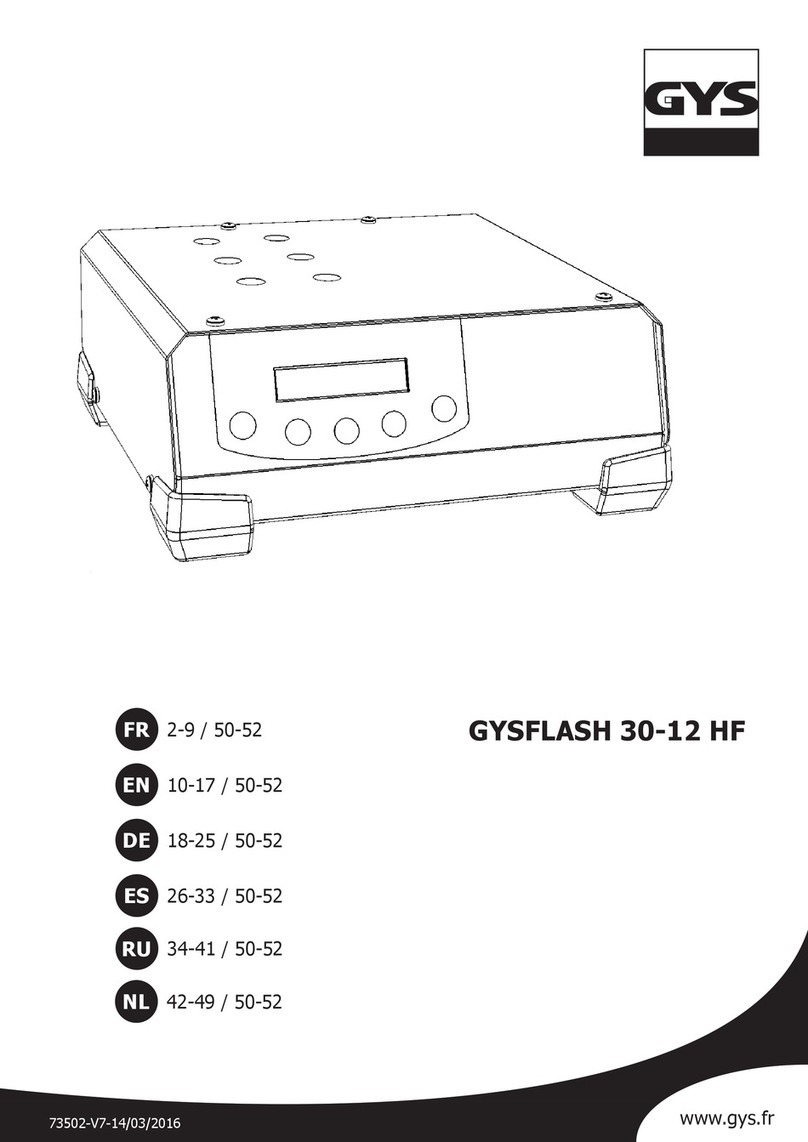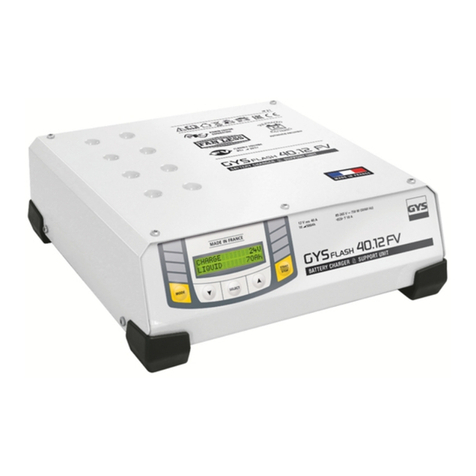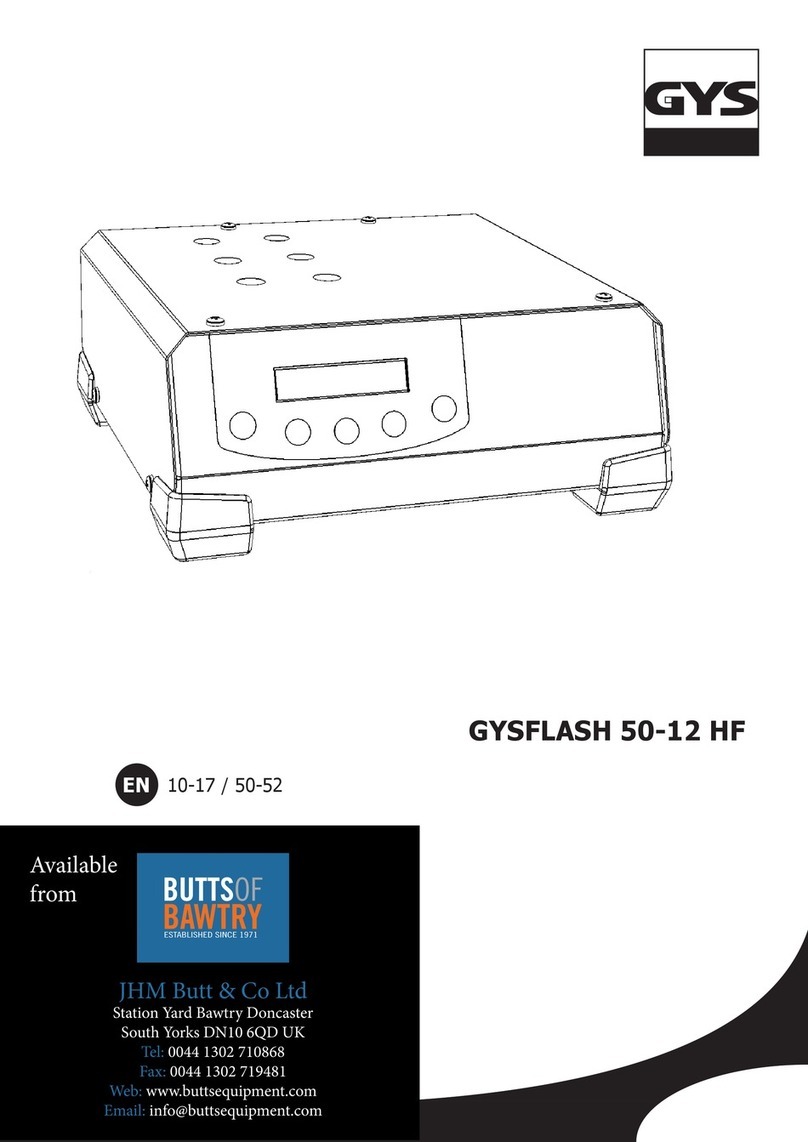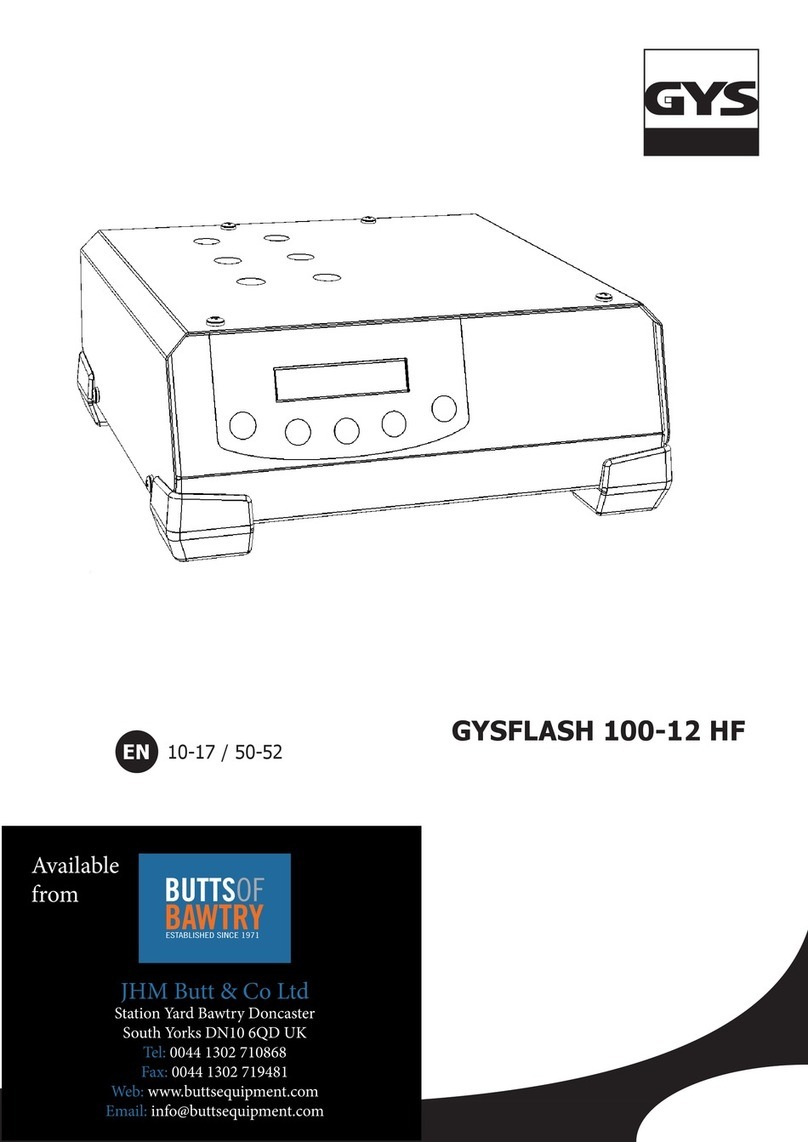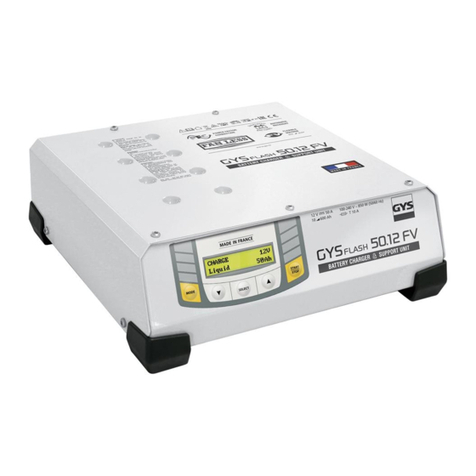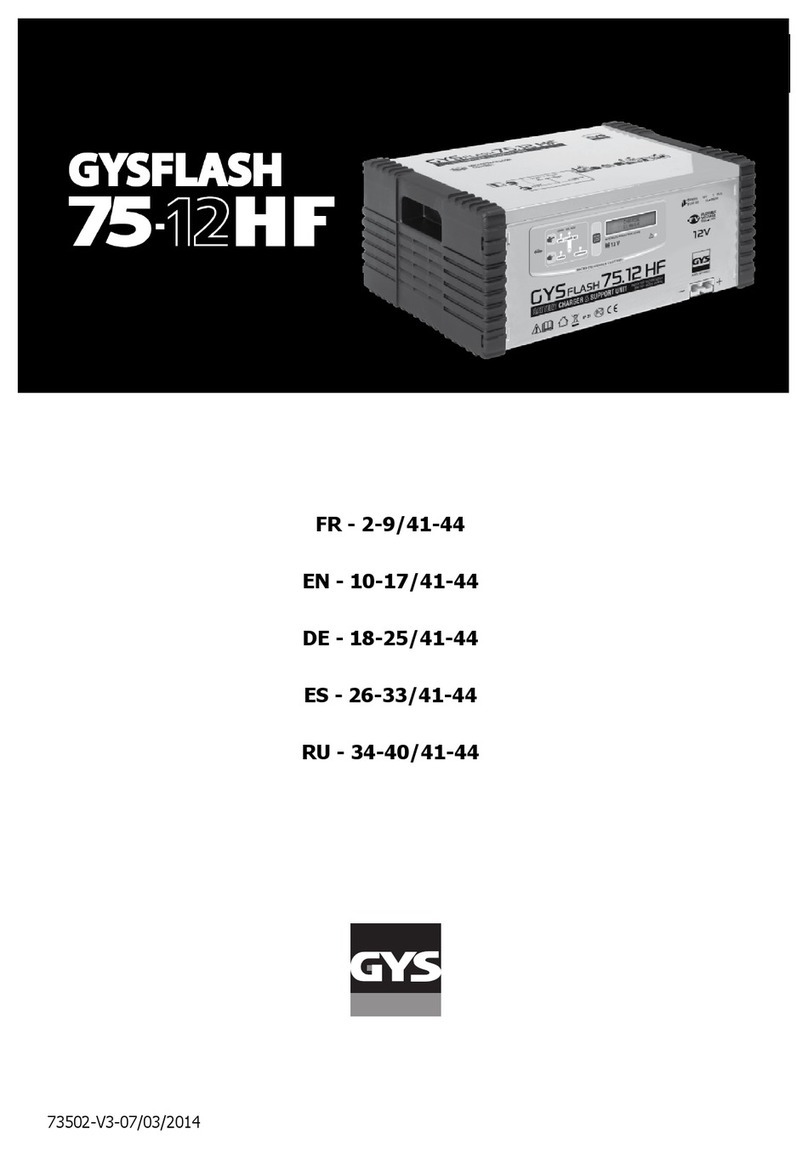
8
4 Affichage clignotant :
« >30A »
+ signal sonore
Consommation excessive par
rapport à la puissance du chargeur Arrêter certains consommateurs pour arriver à
une situation normale.
5
Le GYSFLASH délivre un fort
courant (entre 10A et 30A)
alors que vous n’avez pas
encore lancé votre outil de
diagnostic
De nombreux consommateurs sont
actifs sur le véhicule.
Fonctionnement normal du GYSFLASH. Couper
les consommateurs pour vérifier que la batterie
ne soit pas trop déchargée (voir cause n°2)
Batterie déchargée
Votre batterie est profondément déchargée, le
GYSFLASH délivre un courant pour la
recharger. Attendre que le courant soit sous les
10A pour lancer le diagnostique.
6 Affichage durant 1sec :
« n battery »
+ signal sonore
Le mode Showroom est en
fonctionnement « no battery »
Showroom sans batterie : fonctionnement
normal du GYSFLASH.
Pour désactiver la fonction « no battery »,
appuyer sur START/STOP, et ré-appuyer de
nouveau sur START/STOP pour lancer le mode
Showroom avec batterie.
7 L’appareil est bloqué en mode
Showroom Lock Showroom actif Fonctionnement normal du GYSFLASH.
Se référer au menu configuration pour
désactiver la fonction.
8 L’afficheur indique :
« #erreur temp(°C) »
+ signal sonore
Ventilateur défectueux Contacter le revendeur
Exposition prolongée au soleil
Ne pas laisser l’appareil au soleil
Laisser le produit allumé jusqu’à ce que le
défaut disparaisse. (Possibilité d’arrêter le
signal sonore en appuyant sur START/STOP)
9 L’afficheur indique :
« #erreur IHM »
+ signal sonore Problème électronique Contacter le revendeur
10 L’appareil semble fonctionner
normalement mais ne délivre
plus de tension sur les pinces auvaise manipulation Changer le fusible interne par une personne
qualifiée (réf. 054646 : 40A)
11 L’appareil n’affiche rien
fusible d’entrée HS Changer le fusible d’entrée par une personne
qualifiée (fusible temporisé 6.3A 5x20 réf.
054578)
Réseau électrique défectueux Vérifier que la tension du réseau électrique est
comprise entre 180 et 260V
AVERTISSEMENTS
Gaz explosif, éviter les flammes et les étincelles. Pendant la charge, la batterie doit être placée
dans un emplacement bien aéré.
Risque de projection acide.
ettre à l’abri de la pluie et de l’humidité.
Votre chargeur doit être raccordé à un socle de prise de courant relié à la terre.
Si le câble d’alimentation est endommagé, ou si le fusible interne est fondu (ref 051386), il doit être
remplacé par le fabricant, son service après vente ou une personne de qualification similaire, afin
d’éviter un danger.
A n'utiliser en aucun cas pour charger des piles ou des batteries non-rechargeables.
La borne de la batterie non reliée au châssis doit être connectée la première. L’autre connexion doit
être effectuée sur le châssis loin de la batterie et de la canalisation de combustible. Le chargeur de
batterie doit alors être raccordé au réseau.
Après l’opération de charge, débrancher le chargeur du réseau, puis retirer la connexion du châssis
et la connexion de la batterie, dans l’ordre indiqué.
L’appareil doit être placé de façon telle que la fiche de prise de courant soit accessible.

